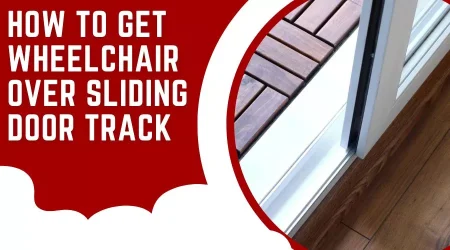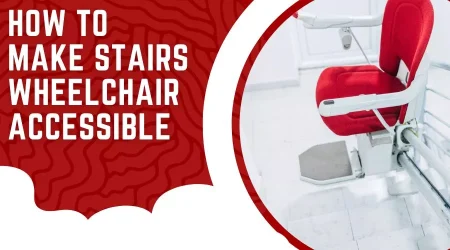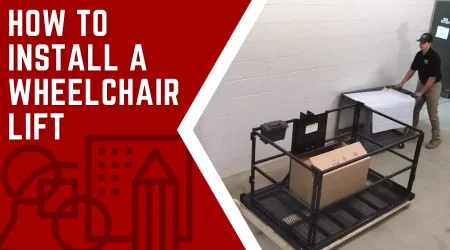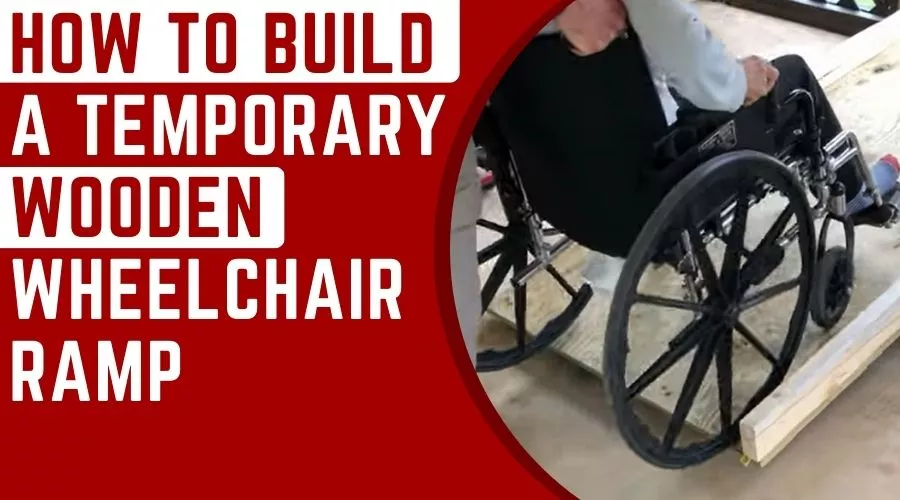
Overcoming obstacles, such as steps or raised thresholds, can be a challenge for those using a wheelchair.
Fortunately, building a temporary wooden ramp for wheelchair access can be an effective and cost-efficient solution for providing access to your home or other spaces.
This guide will walk you through the steps of constructing a safe, sturdy ramp.
How to Build a Temporary Wooden Wheelchair Ramp – Step-by-step Guide
Gather Essential Materials and Tools
To get started, you will need the following materials:

- Durable pressure-treated lumber (2×6 or 2×8)
- High-quality deck screws
- Galvanized joist hangers for added stability
- Ramp brackets for support
- A saw for cutting the lumber to size
- A drill for securing the ramp boards and brackets
- A measuring tape for accurate measurements
Measure the Height and Length of the Ramp
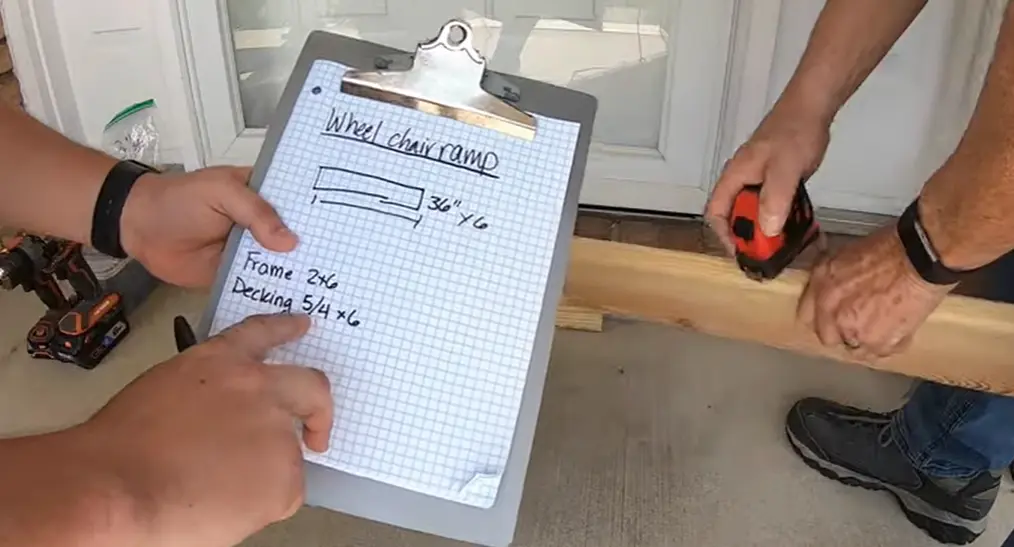
The height and length of the ramp are crucial for ensuring a safe and accessible ramp.
To determine these measurements, simply measure the height of the obstacle you are trying to overcome.
As a general rule, the ramp should have a slope of no more than 1 inch of rise for every 12 inches of run.
For instance, if the height of the obstacle is 24 inches, the ramp should be at least 24 feet long.
Cut The Boards To Ramp Length
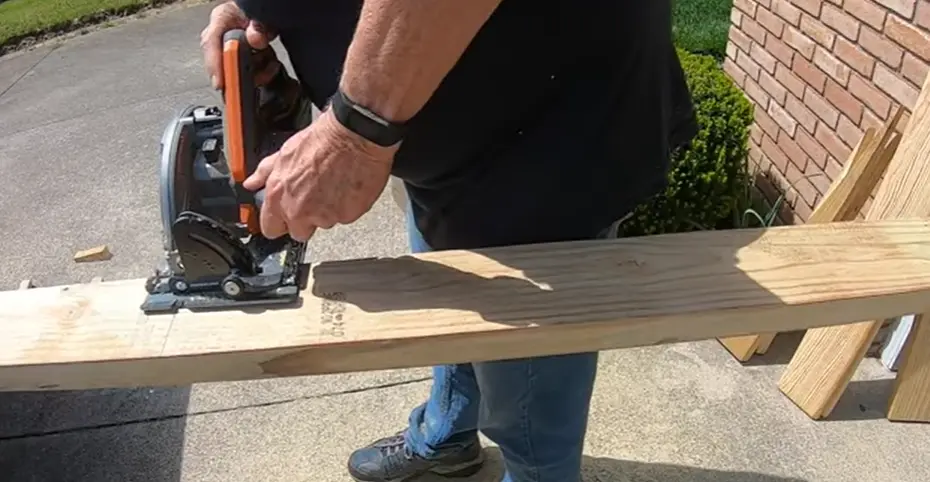
Cut the pressure-treated lumber to the correct length, ensuring that the ramp boards are at least 2 feet longer than the ramp itself.
This extra length will be used to secure the ramp brackets to the deck or porch.
Install the Ramp Boards and Brackets
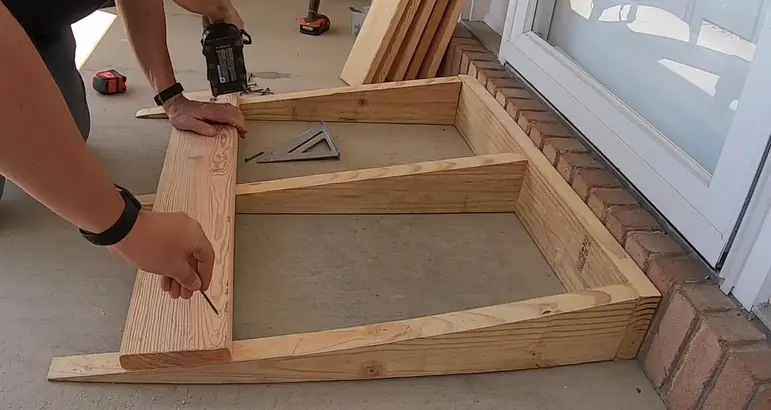
Secure the ramp boards to the ramp brackets using high-quality deck screws.
Make sure to countersink the screws slightly to prevent interference with the wheels of the wheelchair.
Place the ramp brackets at regular intervals along the length of the ramp for additional support.
Install Galvanized Joist Hangers
Attach the galvanized joist hangers to the end of each ramp board to secure it to the deck or porch.
The joist hangers should be spaced at regular intervals along the length of the ramp to provide additional stability.
Building the Ramp to the Ground level

Repeat steps IV to VI until the ramp is long enough to reach the ground.
Ensure that the ramp is level and secure as you build it to ensure its stability.
Secure the Ramp with Brackets
To prevent the ramp from shifting, it’s important to secure it at both the top and bottom with sturdy brackets.
Make sure the brackets are attached securely to both the deck or porch and the ground.
Aesthetic Touch-Ups
Sand any rough spots on the ramp surface to prevent splinters and to make it easier to navigate with a wheelchair.
Additionally, you may want to paint or stain the ramp to protect it from the elements and improve its appearance.
Place the non-slip tape on the ramp to prevent slipping and provide additional traction.
Conclusion
With these steps, you now have the knowledge and practical guidance needed to build a temporary wooden ramp for a wheelchair.
Keep in mind that building a ramp requires careful planning, attention to detail, and a commitment to safety.
With proper construction, you can provide a safe and accessible space for those in wheelchairs to enter and exit homes or other spaces with ease.
FAQs
What can I use instead of a wheelchair ramp?
There are a few alternatives to a traditional wheelchair ramp, including:
1. Stairlifts
2. Vertical platform lifts
3. Elevators
4. Ramps made from alternative materials such as aluminum or concrete
Can I use plywood for a wheelchair ramp?
It is not recommended to use plywood sheets for a permanent ramp as it is not durable enough to withstand the weight and regular use of a wheelchair. However, it can be used temporarily in a pinch, as long as it is reinforced and securely fastened to prevent any safety hazards.
Does Medicare cover temporary wheelchair ramps?
Medicare may cover the cost of a temporary ramp in certain situations, such as if the ramp is deemed medically necessary for a person’s recovery from an illness or injury. However, coverage will vary based on individual circumstances, so it’s recommended to check with Medicare directly for more information.
What is the ideal ramp slope for a wheelchair ramp?
A slope of 1:12 is considered the ideal slope for a ramp that is used by a wheelchair user. This means that the ramp will rise 1 inch for every 12 inches of run.
How long should a ramp be for a height of 24 inches?
If the height of the obstacle is 24 inches, then the ramp will need to be 24 feet long in order to maintain a 1:12 slope.
What type of lumber should be used to build a ramp?
Pressure-treated lumber is recommended for building a ramp as it is durable and resistant to rot and decay.
How do I install the ramp brackets?
Ramp brackets should be installed by determining their location based on the slope of the ramp and the height of the obstacle. Secure the ramp brackets to the deck or porch using galvanized joist hangers and screws, and then attach them to the ramp boards using screws.
What safety precautions should be taken when building a ramp?
When building a ramp, it’s important to make sure that it is stable and secure and to take precautions to prevent slips and falls. Sanding down rough edges, applying the non-slip tape, and properly securing the ramp boards are all important steps to ensure safety.
What materials can be used instead of wood for a ramp?
Alternative materials that can be used to build a more permanent ramp include aluminum, concrete, and other types of composite materials.

![How Do People In Wheelchairs Drive An Automatic Car – [Updated 2023]](https://perfectwheelchairs.com/wp-content/uploads/2023/01/How-Do-People-In-Wheelchairs-Drive-450x250.webp)
